Jesse Walters recently received a MS from Boise State University where he worked with Dr. Matthew Kohn on a NSF funded project studying Himalayan tectonics. He is currently a PhD student at the University of Maine, and studies sulfur isotope systematics during subduction.
We are all taught the scientific method at some point: a formulaic approach to inquiry we must follow. However, in practice, science is rarely straightforward. Sometimes investigation is required to develop a hypothesis, especially when boundaries are being pushed. Alternatively, well-formulated hypotheses may need to be abandoned because the methods to test it are insufficient. My project, a 3-year investigation of the tectonic evolution of the Himalaya in the Annapurna region of central Nepal, is a tale both of research in one of the most dynamic, beautiful places on Earth and of making life’s lemons into lemonade.
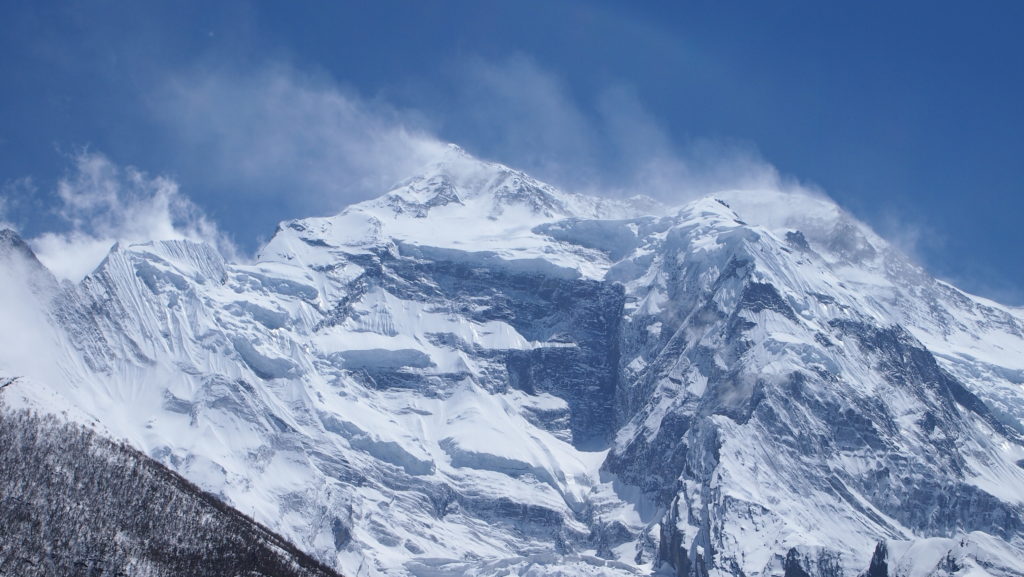
The 7,937-m peak of Annapurna II, the 16th highest in the world, photographed from the steps of a monastery in Pisang.
A fascinating feature of the Himalaya is the apparent lateral continuity of the major lithotectonic units and major structures. The Himalaya are largely comprised of metamorphosed sediments deposited along the northern margin of India. The Indo-Euasian collision 50–55 million years ago initiated cycles of burial and uplift that built the fascinating tectonic sandwich of mountains we see today: hot, deeply buried rocks in the central region of the mountains bounded to the north and south by cooler, more shallowly buried rocks.
The construction of the hot “crystalline core” of the Himalaya remains an area of intense debate. One scenario employs a tectonic meat slicer: as India is thrust beneath Eurasia, slices of India become attached to the overriding plate, and the bounding fault shifts to a lower position. Another scenario (called “channel flow”) suggests that the deep, partially molten rocks beneath the Himalaya, heated by radioactive decay, ooze to the surface to take the place of rocks removed by erosion. A channel of rock flowing to the surface requires the overlying rock to move in the opposite direction, which has been used to explain the presence of the large-scale, normal-sense shear zone that overlies the crystalline core. Rocks flow at an extremely slow rate, and for channel flow to work, this normal-sense shear zone must have been long-lived. However, the duration of this structure (referred to as the “South Tibetan Detachment”) remains poorly constrained.
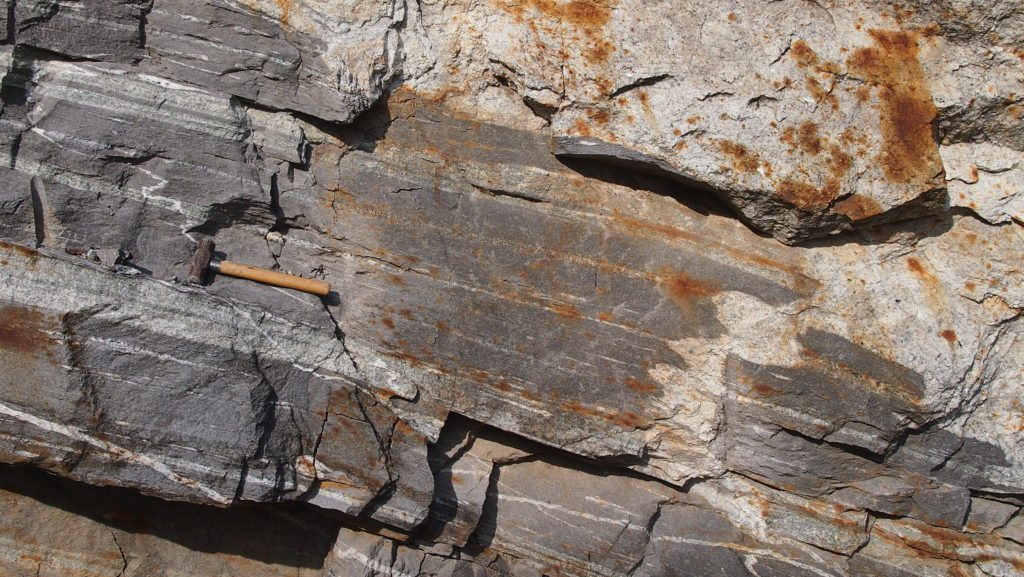
Layers of calc-silicate (green) and psammitic (gray) gneisses cut by granite dikes. Titanite is a common accessory mineral in calc-silicates.
We hypothesized that the South Tibetan Detachment in the Marsyandi Valley was active over the same period as the thrust marks the lower bound of the crystalline rocks (a requirement of channel flow). The goal was to constrain the duration of movement on the structure by identifying the duration of high temperature (700-800 °C was expected for these rocks) metamorphism on either side of the shear zone. The technique employs chemical and isotopic analyses of the mineral titanite (CaTiSiO5). Titanite uniquely incorporates trace amounts of uranium and zirconium. The radioactive decay of uranium to lead at a specific rate allows the calculation of a mineral’s age, while the substitution of zirconium for titanium is indicative of temperature. Assuming new titanite was growing throughout metamorphism, we can analyze this mineral to track how temperature changes through time. For a normal-sense shear zone like the South Tibetan Detachment, we would expect that the overlying rocks are heated as the underlying rocks cool.
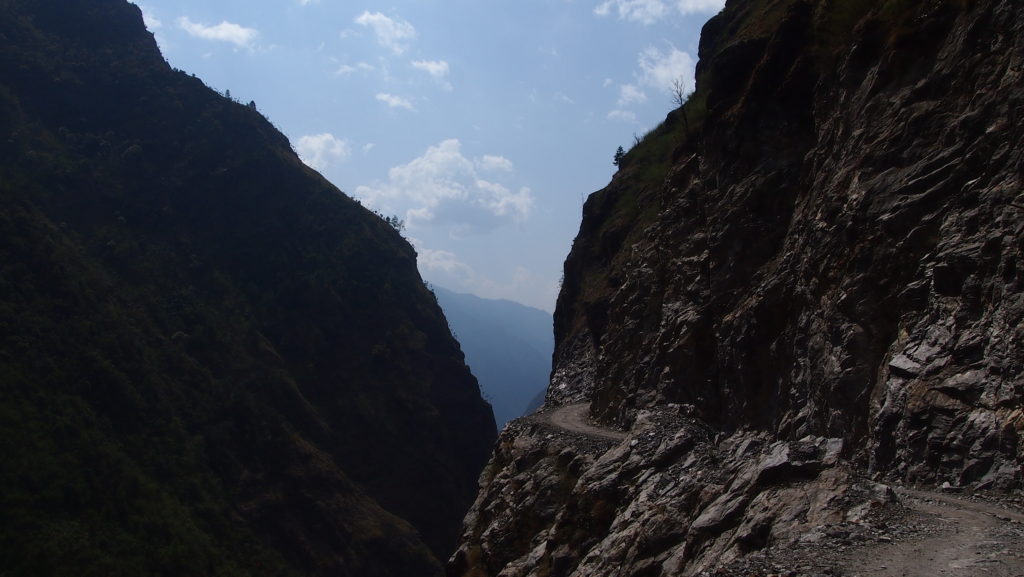
The road that leads up the Marsyandi Valley. Recently built, the locals say the road will eventually connect with the Kali Gandaki Valley, making the entire Annapurna circuit accessible to vehicles.
The plan was simple: drive up the newly built road in the Marsyandi Valley to the town of Chame, trek farther up the valley to sample above the detachment, and then drive up the Kali Gandaki Valley and do the same. I collected samples during April 2014, and the next 2 years involved processing samples, calculating ages, and determining metamorphic temperatures.
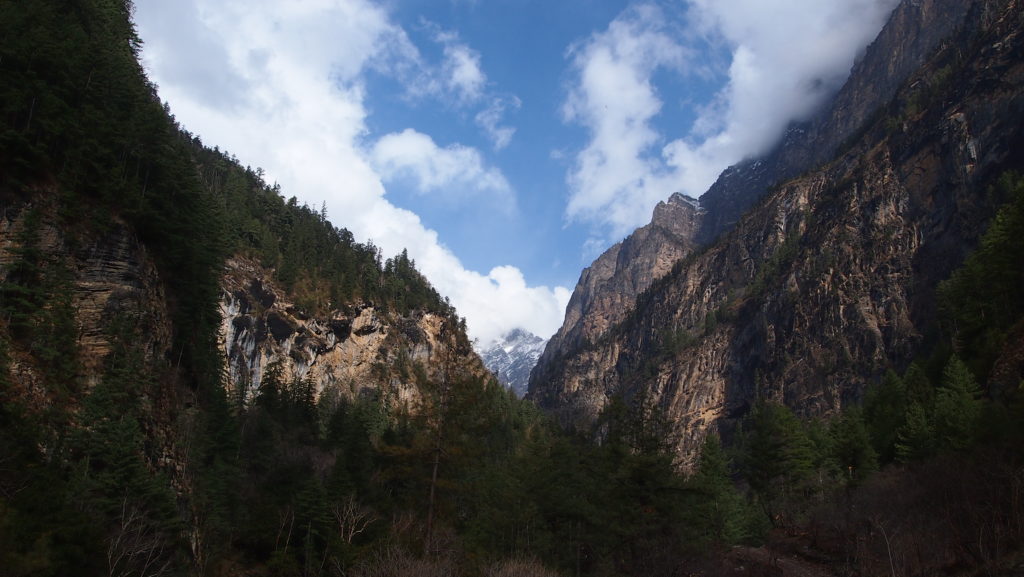
A view of the Marsyandi Valley upstream of the town of Chame. The South Tibetan Detachment is located somewhere in this image; however, we were unable to locate a clear shear zone in any of the accessible parts of the valley.
Despite not locating the shear zone in the field (a common problem in the Himalaya due to terrain), metamorphic temperatures were found to drop rapidly over just a few hundred meters in the region where the South Tibetan Detachment had previously been mapped. A large-scale structure is required to juxtapose rocks with such different histories. Unfortunately, the rocks above the main strand were too cold to form titanite. Thus, I could only determine the temperature-time histories for rocks beneath the shear zone.
My manuscript, published in the October 2017 issue of the Journal of Metamorphic Geology*, focused on a thrust-sense shear zone that the titanite data revealed a few kilometers structurally below the detachment. This shear zone was active from ~ 25 to 16–17 million years ago. Over the last 10 years, numerous thrust-sense shear zones have been found within the crystalline core of the Himalaya. They suggest that the crystalline rocks were not a single, large, high-grade tectonic unit but a series of two or more smaller slices. However, hope was not lost for the South Tibetan Detachment. The rocks immediately beneath the detachment only showed minor amounts of the cooling: there was no evidence of the large cooling event that would result from the juxtaposition of 530 °C rocks over ~ 800 °C rocks. Therefore, the vast majority of movement along the detachment did not occur until 16–17 million years ago or later.
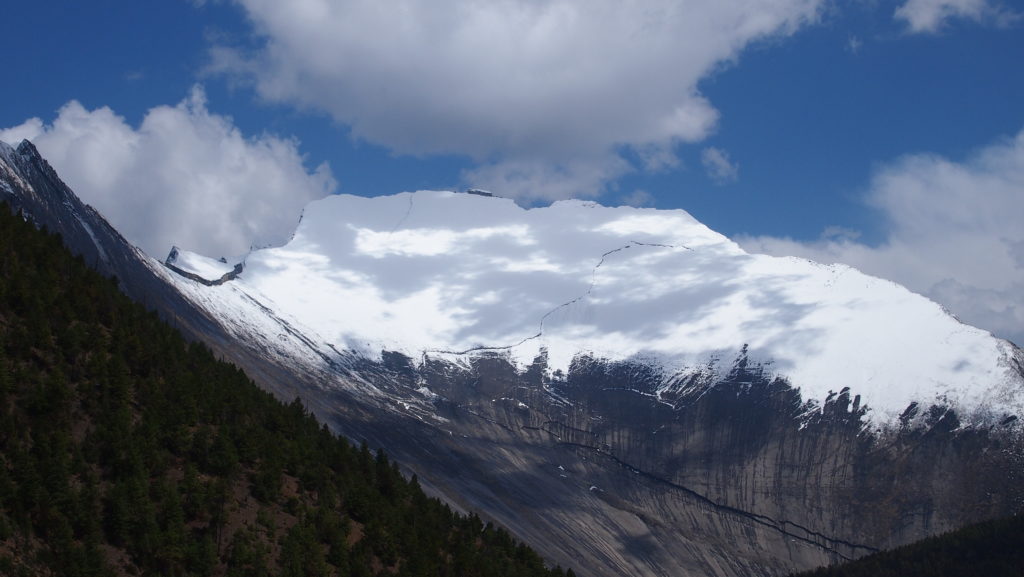
Looking downriver from Pisang is a large glacially carved wall of banded biotite marbles that sit atop the high-temperature crystalline rocks.
My research took an unusual course, I was still able to tell a story. Yet only half the story was what I set out to find. In science, it is not uncommon that we stumble across new discoveries by happenstance. There is nothing you can do if you cannot find the outcrop you need because it is somewhere up a 1,000-m cliff. With a bit more digging, and perhaps some adjustments to your approach, there may still be something useful to be said. Finally, if there is one piece of advice I would give, it would be to never hold your hypotheses too closely.
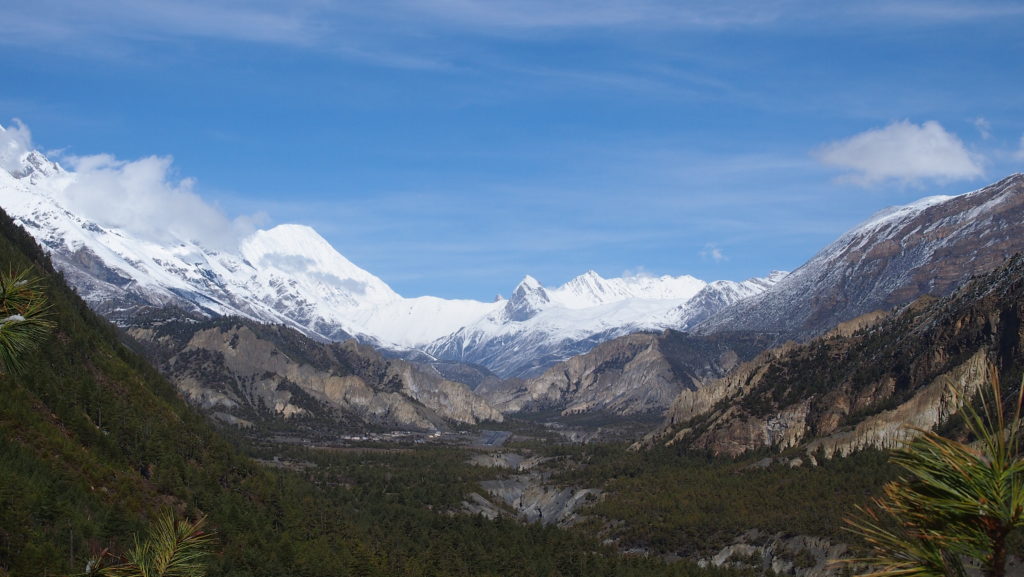
Looking up river from near the town of Pisang; above this point the rocks are weakly metamorphosed to unmetamorphosed. It was clear that these rocks would not contain titanite, and this was the farthest point that any samples were collected.
* Walters, JB, Kohn, MJ, 2017. Protracted Thrusting and Late Rapid Cooling of the Greater Himalayan Sequence, Annapurna Himalaya, Central Nepal: Insights from Titanite Petrochronology. Journal of Metamorphic Geology, 35, 897-917.
![]() This work is licensed under a Creative Commons Attribution-NonCommercial-ShareAlike 4.0 International License.
This work is licensed under a Creative Commons Attribution-NonCommercial-ShareAlike 4.0 International License.
